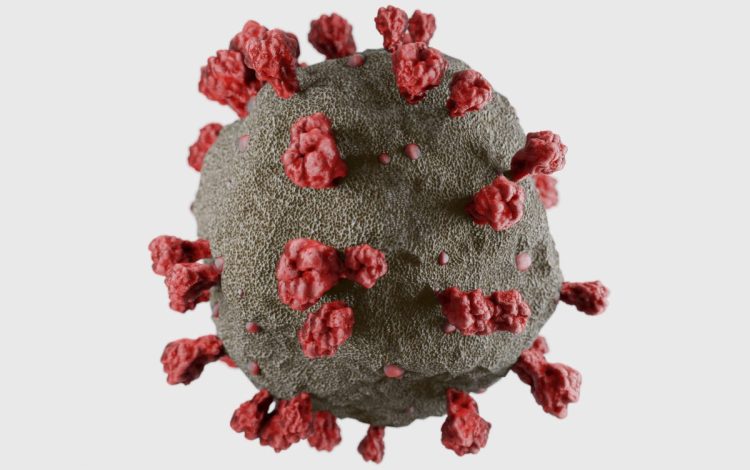Watch all the Transform 2020 sessions on-demand here.
Global cases of COVID-19 surpassed 100,000 today. As President Trump signs into law an $8.3 billion emergency aid package to address the crisis, the chief of the World Health Organization (WHO) said yesterday that this is “a time for pulling out all the stops.”
New cases are emerging in countries around the world, but COVID-19 appears to be flat or declining in China, where the novel virus first emerged. Earlier this week, VentureBeat took a look at some ways AI is being applied to fight COVID-19.
AI and big data played a significant role in China’s response to COVID-19, according to a WHO report compiled by about a dozen outside health professionals and released last month.
The assessment finds that swift action by Chinese authorities to limit travel and quarantine entire cities potentially kept hundreds of thousands of people from being infected. But many also criticized China’s measures as draconian.
June 5th: The AI Audit in NYC
Join us next week in NYC to engage with top executive leaders, delving into strategies for auditing AI models to ensure fairness, optimal performance, and ethical compliance across diverse organizations. Secure your attendance for this exclusive invite-only event.
It’s unclear to what extent facial recognition played a role in enforcement of public safety in China, but a coauthor of the WHO study told Science that China is making strides on COVID-19 through “good old social distancing and quarantining, very effectively done because of that on-the-ground machinery at the neighborhood level facilitated by AI and big data.”
China quarantined 50 million people in cities like Wuhan and used WeChat and Alipay to track people’s movement and keep infected individuals from traveling. The government also deployed facial recognition and thermal sensors in drones and helmets.
If quarantines are ineffective or improperly carried out, millions of people could die, according to some estimates, but that doesn’t mean we can throw civil liberties out the window.
Surveillance tech deployed
Aside from the spread of COVID-19, the other prevailing story this week was a rush of revelations about companies peddling AI-powered surveillance technology to businesses, governments, and law enforcement agencies.
Wolfcom is selling live facial recognition body cameras to police departments, a move major body camera company Axon says is premature. Wolfcom has sold cameras to 1,500 law enforcement agencies to date.
Clearview AI made its facial recognition algorithm using 3 billion images scraped without permission from Facebook, Google, and other parts of the web. Now the company is attempting to acquire mug shots taken in the past 15 years. A data breach last week revealed Clearview AI’s client list of more than 2,000 customers, including major businesses and law enforcement agencies.
Senator Ed Markey (D-MA) sent Clearview AI a letter this week probing the extent of the data breach and the company’s relationship to authoritarian governments with poor human rights track records, like Saudi Arabia.
Viral surveillance
Can quarantines serve as an excuse to increase the surveillance state? How should we be thinking about this as communities argue whether Clearview AI and live facial recognition signal the end of privacy?
I posed these questions to Brian Hofer. He’s chair of the privacy commission in Oakland, California and coauthor of legislation in a number of cities to adopt surveillance technology oversight policy and facial recognition bans.
Hofer and I spoke roughly a year ago when the U.S. Congress began considering more AI regulation legislation and San Francisco became the first U.S. city to ban facial recognition. Police use of live facial recognition body cameras isn’t something you currently have to worry about in California, where a three-year moratorium is in place.
Hofer said mass surveillance is often presented as a solution in a crisis, and much like the passage of the Patriot Act after 9/11, he said, people can respond to crises by surrendering freedoms.
“Fear is a powerful motivator, and even if it’s just a natural disaster, it’s not like 9/11, you still see people willing to make this sort of calculus that if it can save one life and make things a little bit better, that I’ll sacrifice my civil liberties,” Hofer said. “It’s something that really frustrates me, but I think it’s also sort of human nature that in a crisis we’re not the most clearheaded, and if there are nefarious people at the same time pushing an expansion of surveillance, then it finds a receptive audience.”
Without question, the effects of COVID-19 will extend far beyond its health impact.
Productivity apps and teleconferencing software like Zoom are poised to grow in adoption as more people work from home. Chinese communities are experiencing increased racism. Global economies are bracing for recession, and no one knows exactly how the spread of COVID-19 will impact global supply chains, public events, travel, and other industries. And even as we’re actively discussing whether a company like Clearview AI will mean the end of privacy, COVID-19 could easily be used as an excuse to spread mass surveillance.
This is not intended to be alarmist, but it’s important to keep an eye on mission creep in this space.
COVID-19 is in over 60 countries today. It may be true that, as an analyst commenting on the WHO China study said, no other country in the world can respond to the pandemic the way China just did, but that doesn’t mean they won’t try.
For AI coverage, send news tips to Khari Johnson and Kyle Wiggers and AI editor Seth Colaner — and be sure to subscribe to the AI Weekly newsletter and bookmark our AI Channel.
Thanks for reading,
Khari Johnson
Senior AI Staff Writer


